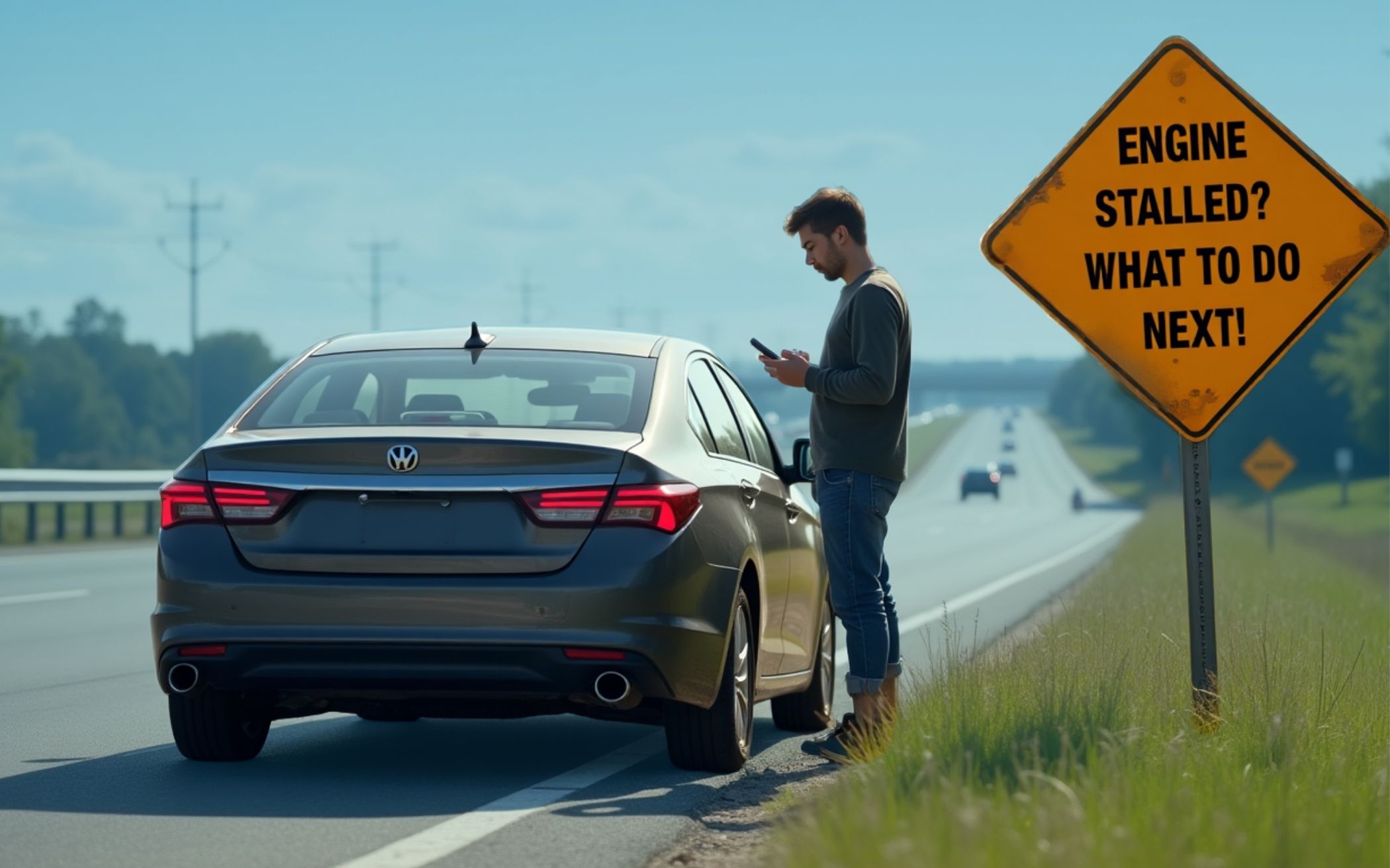What To Do If Engine Stalls While Driving

Engine stalling while driving is a disconcerting and potentially dangerous experience. It can range from a minor inconvenience to a critical safety hazard, especially in high-traffic situations. Understanding the potential causes and knowing how to react can significantly improve your safety and help you diagnose the problem efficiently. This article delves into the common reasons behind engine stalling, outlines the immediate actions you should take, and provides guidance on troubleshooting the issue.
Immediate Actions When Your Engine Stalls
The first priority is safety. When the engine unexpectedly quits, you lose power steering and power brakes, making the vehicle harder to control. Here's a step-by-step approach:
- Stay Calm and Assess the Situation: Panic can lead to poor decisions. Quickly evaluate your surroundings, including traffic flow and available space.
- Engage the Hazard Lights: Immediately activate your hazard lights to warn other drivers of your situation. This provides visual warning while you attempt to regain control.
- Attempt to Restart the Engine: While maintaining control, try to restart the engine. Turn the ignition key to the 'Start' position and hold it for a few seconds. If it doesn't start immediately, release the key and try again. Don't crank the engine continuously for extended periods as this can damage the starter motor.
- Shift to Neutral or Park (Automatic Transmissions): If restarting in 'Drive' is unsuccessful, shift the transmission to 'Neutral' or 'Park'. This reduces strain on the engine during restart attempts. For manual transmissions, depress the clutch pedal fully.
- Steer to Safety: If the engine doesn't restart immediately, use what momentum you have to steer the vehicle off the road and to a safe location, such as the shoulder. Remember that power steering assist is gone, so steering will require more effort.
- Secure the Vehicle: Once safely off the road, engage the parking brake and ensure the vehicle is stable.
- Call for Assistance: Contact roadside assistance, a tow truck, or a qualified mechanic. Do not attempt to diagnose or repair the vehicle on a busy road.
Common Causes of Engine Stalling
Several factors can contribute to engine stalling. Here are some of the most common culprits:
- Fuel System Issues: A lack of fuel is a primary cause. This could be due to an empty fuel tank (check the fuel gauge!), a faulty fuel pump, a clogged fuel filter, or a malfunctioning fuel injector. The fuel pump, responsible for delivering fuel from the tank to the engine, is a common point of failure.
- Ignition System Problems: The ignition system is responsible for creating the spark that ignites the fuel-air mixture. Faulty spark plugs, a failing ignition coil, a malfunctioning distributor (in older vehicles), or a crank sensor failure can all lead to stalling. Specifically, issues with the crankshaft position sensor (CKP) can cause intermittent stalling.
- Vacuum Leaks: Vacuum leaks can disrupt the air-fuel mixture, causing the engine to run lean and stall. Common sources include cracked or disconnected vacuum hoses, a leaking intake manifold gasket, or a faulty PCV (Positive Crankcase Ventilation) valve.
- Sensor Malfunctions: Modern engines rely on a network of sensors to monitor various parameters. A faulty Mass Airflow (MAF) sensor, Oxygen (O2) sensor, or Throttle Position Sensor (TPS) can send incorrect data to the engine control unit (ECU), leading to stalling. The MAF sensor is especially sensitive to contamination.
- Idle Air Control (IAC) Valve Issues: The IAC valve controls the amount of air that bypasses the throttle plate when the engine is idling. A malfunctioning IAC valve can cause the engine to stall, especially when coming to a stop.
- Engine Control Unit (ECU) Problems: While less common, the ECU itself can sometimes be the source of the problem. A corrupted program or a failing ECU component can lead to engine stalling.
- Torque Converter Problems (Automatic Transmissions): In some cases, a failing torque converter lock-up clutch can cause the engine to stall, particularly when coming to a stop.
Troubleshooting and Diagnosis
Diagnosing the cause of engine stalling often requires professional tools and expertise. However, you can perform some basic checks:
- Check for Obvious Issues: Is the fuel gauge reading empty? Are there any obvious leaks or loose connections?
- Listen for the Fuel Pump: When you turn the ignition key to the 'On' position (without starting the engine), you should hear the fuel pump prime for a few seconds. If you don't hear it, the fuel pump may be faulty.
- Scan for Diagnostic Trouble Codes (DTCs): Using an OBD-II scanner, check for any stored DTCs. These codes can provide valuable clues about the source of the problem. Keep in mind that some codes may require professional interpretation.
- Inspect Vacuum Hoses: Visually inspect all vacuum hoses for cracks, leaks, or disconnections.
If you are not comfortable performing these checks or if the problem persists, it is best to consult a qualified mechanic. They can use specialized tools and diagnostic procedures to accurately identify the cause of the engine stalling and recommend the appropriate repairs. Ignoring the problem can lead to further damage and potentially dangerous driving conditions.
